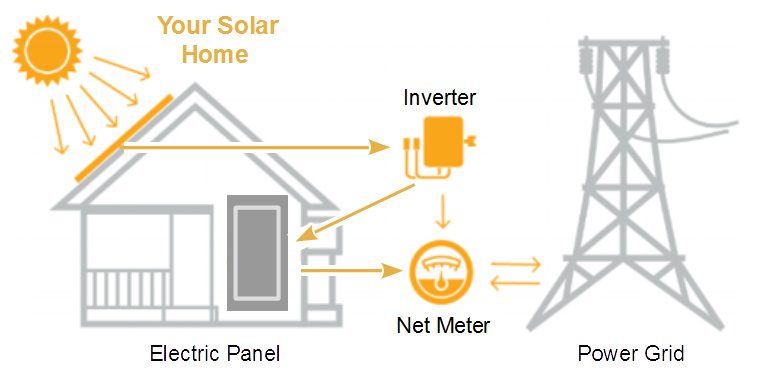A Few Basics About Solar Energy Technology
Every system is built using high quality and durable power components.

There are four basic components in your solar energy system:
- Photovoltaic (PV) cells convert sunlight to direct current (DC) electricity.
- The inverter converts DC into alternating current (AC) electricity, compatible with the electric grid.
- The electrical panel distributes power from your solar system and from your utility as needed.
- The utility meter measures the energy you draw and feed back to the grid.
Solar panels produce energy by using silicon to convert UV rays into electricity.
Modern solar panel technology is highly efficient. In 15 minutes the sun produces enough energy to supply the world with electricity for a year using current products.
Choosing the right solar panels is a matter of finding the highest quality with demonstrated reliability and at a price that all ensure the greatest lifetime savings.
Power inverters are essentially the brains of a system:
In addition to efficient DC/AC conversion, these devices and added components like optimizers provide everything needed to get maximum production from each solar panel.
Beyond effectively managing power, inverters make it possible to connect to the grid and also provide real time data to help local and remote system monitoring.
The Utility Meter
A solar energy installation in Massachusetts requires a special utility meter in order to connect to the power grid. The two-way device allows the power company to track and communicate to the homeowner both the net energy supplied by the utility and the net solar energy the ratepayer sends back to the utility.
This meter is essentially a gate-watcher of power moving through it. A couple of examples help explain its purpose:
- If a solar energy system is producing 50% of what the household needs at a given moment, the meter simply registers a lower demand or supply from the utility.
- If a solar energy system is producing in excess of what the household needs at a specific moment, the meter tracks the power (in kWh) the home is sending back to the grid.
This net energy tracking is vital for the solar system owner to be properly compensated for the total balance of energy purchased and generated from their rooftop after time. To see more about this incentive and how a homeowner saves with solar, visit our Residential Solar Incentives page.
Monitoring System Performance
Because a solar energy system can supply a home directly and offset the power drawn from the grid, the utility meter will not tell the full story.
The good news is SunRa Solar designs systems that make it easy to offer effective and easy to use system monitoring software. The owner would be able to instantaneously sample performance independent of what is flowing through the meter. System monitoring is powerful not only for personal tracking, but it is instrumental in confirming long term performance and can help to diagnose a problem, should one occur.






